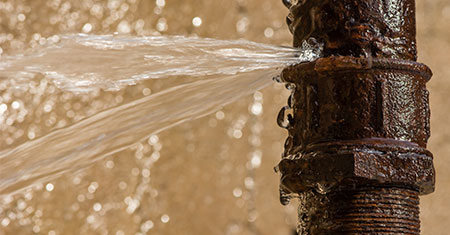CCB License#218431
Posted by: Elite Restoration on January 15, 2022
Taking Care of Burst Pipes
When temperatures dip below freezing, the risk of a pipe bursting is higher than ever. If that happens in your home, the clean-up of the aftermath can be even more important than the pipe repair.

Depending on where the pipe has burst, there might be a number of different areas impacted by the water, including:
- Electrical systems (contact a professional to help with water damaged electrical systems, there is a high risk of electric shock)
- Walls, baseboard, or wallpaper
- Floors or subfloor
- Furniture, carpet, and other personal items
Our team of restoration professionals can help take the stress and worry out of restoring your home after water damage occurs. Contact the team at Elite Restoration today if you have experienced mild or severe water damage.
Frequently Asked Questions
While some homeowners may attempt DIY installation, professional installation ensures proper coverage and safety compliance, minimizing the risk of issues such as settling or compression.
While some tasks can be DIY, such as cleaning and disinfection, professional remediation is recommended for complex issues or extensive contamination.
There are a few different methods of achieving this, the most common is in part with re-roofing the mobile home after blowing insulation into the attic cavity.
Yes, we provide warranties for both labor and materials, including 20-year warranties on encapsulation systems.
Most homeowner's policies cover most water damages, but not all water damages are created equal. There can be a lot of exceptions to coverage depending on the intricacies of your policy. This is why it's a good idea to be familiar with your policy and call your agent right away when damage occurs.
As with all insurance related questions, the answer is that it depends on your coverage. Usually, though, the answer is yes. While there are some types of water damages that aren't covered by standard policies or reasons your policy might not cover the damage, if the water damage is covered by your policy the drying process will also be covered.
A good portion of water damage can be prevented by proper household maintenance. Routine plumbing maintenance, as well as sump pump and appliance maintenance, are effective ways to avoid preventable damages. If you live in a cold climate, preparing your home for the winter can also help avoid damage. Finally, it's a good idea to regularly check the exterior of your home, particularly your roof, for damage to ensure water isn't unexpectedly leaking into your home.
Seal any potential entry points, such as gaps in the roof or vents, and trim overhanging tree branches.
DIY soot removal is not recommended. Commercially available products can actually cause permanent damage to surfaces. Soot itself is primarily oil-based, but that residue also contains toxic, possibly biohazard contaminants.
Identifying the source of the water damage is one of the first steps in both the insurance claim process and before beginning to dry out and repair the damaged areas. After all, if you replace a sagging, wet ceiling that was caused by a roof leak but don't fix the roof, too, the next rainstorm will start the cycle all over again. The buckling to your hardwood floor could be caused by a leaking pipe. We will pinpoint the exact cause of your water damage and make sure the source is repaired. We make sure your restoration job is done right the first time.
Related Posts
Seasonal Survival: How to Prepare Your Home for Unexpected Weather Events
In the face of increasingly unpredictable weather, ensuring the safety and resilience of your home has never been more critical. From torrential rains (more)
Top 5 Innovations in Water Damage Restoration That Are Revolutionizing the Industry
As a homeowner or business owner, understanding the advancements in water damage restoration can preserve property integrity and prevent exorb (more)
